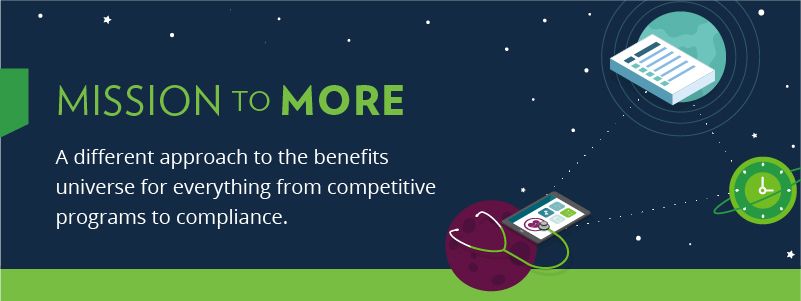Blog
How to Attract and Retain Employees with Student Debt Benefits
Student debt can significantly impact employees’ ability to contribute to retirement savings. Get the recap of our webinar to learn more about how employers can provide meaningful student loan repayment benefits that attract and retain talent.
One in five US adults has student debt, with the greatest amount owed by those 35 to 49 years old. This debt reaches beyond the topic of repayment. Of the 45 million Americans with student debt, eight in ten don’t save enough for retirement. Student debt affects more than just recent graduates and junior employees. Some of your best employees are beholden to student debt—including those continuing to pay off graduate school, those pursuing additional degrees or certifications, and parents carrying debt to pay college tuition for their children. These common financial burdens present an opportunity for employers to provide meaningful student loan repayment benefits that attract and retain talent.
In this blog and webinar, we explore the changing dynamics of student loan debt and why it's important for employers to act. We'll also provide actionable strategies for employers to help their employees navigate these waters effectively.
| At-a-Glance Read time: 5 minutes |
||
|---|---|---|
Why Should Employers Offer Student Debt Benefits?
The past few years have been a roller coaster for borrowers. Hopes of student loan forgiveness were dashed by the recent Supreme Court ruling, to be followed by success with $39 billion of student loan cancellations as result of fixes to Income-Driven Repayment (IDR) plans. Now, borrowers are facing an end to student loan forbearance this fall, which had previously paused payments and interests during the pandemic. About 41 million borrowers will be affected, with nine in 10 saying they aren't ready to resume payments.
Offering student debt benefits can give employers an advantage in recruiting and retention. For those employees struggling to keep up with payments, an employer solution can reduce stress, and it can contribute to the overall well-being of the workforce.
Currently, tuition reimbursement is the primary form of education-related employer benefits, with two in three employers offering tuition assistance to employees. However, adoption rates below 5% signal this isn’t the benefit employees really want.
What do employees with student debt want? According to a SHRM survey, the vast majority of employees—86%—say they’d commit to a job for five or more years if they received student loan repayment benefits. Yet only 8% of employers offer such a benefit. These statistics suggest there is a market gap, which gives companies offering these solutions a recruiting and retention advantage.
What Options Do Employers Have for Providing Student Debt Benefits?
In the current landscape, employers essentially have two solutions for offering employees assistance in repaying their student loans.
Solution #1: The CARES Act and Secure Act 2.0
The CARES Act
The CARES Act includes a provision for a payroll benefit that allows employers to contribute up to $5,250 per year toward student debt until 2025.
Employees do not get taxed for this benefit, and it is deductible to the employer as well.
This benefit follows the standards established by Internal Revenue Code Section 127 regarding educational assistance programs, which must be in place for employers to offer the CARES Act student debt benefit.
SECURE Act 2.0
The SECURE Act 2.0 allows employee contributions to student loans to qualify for an employer match.
For instance, companies like Abbott Labs have allowed employees to pay off student loans under their 401(k) program, providing employer-matching amounts. Employees who contribute at least 2% of their pay to student loans through payroll deduction can receive an amount equivalent to the company's 401(k) match—5% of the employee's compensation—deposited to their 401(k) accounts, even if they don't currently contribute to their 401(k).
While this is one way to provide financial assistance to borrowers, the downside for employees is that since they are paying off debt, they miss out on the compound interest they would receive by contributing to a 401(k) investment instead.
CARES Act versus SECURE Act 2.0
The CARES and SECURE Acts are a positive step forward for employer assistance with student loan debt relief, and the SECURE Act could benefit a significant percentage of employees. The data shows that 95% are already maximizing their match, so by implementing the SECURE Act, an employer can offer a student loan benefit with almost no impact on their budget. Those employees who are maximizing the match by contributing to their 401(k) can now increase their student loan payment by re-deploying their 401(k) deferral towards their student loans.
Solution #2: Student Debt Point Solutions
An alternative to employer contributions and matches is to offer access to student debt point solutions. An example of this is Candidly, a financial wellness platform that helps employees optimize debt repayment strategies.
These solutions can help borrowers:
- Reduce payments
- Refinance at a lower rate
- Pay down student loan debt faster
- Reduce the overall cost of borrowing
As employees pay down student loans faster and save on interest, they can see a measurable benefit that may motivate them to stay with the company. They can also use their savings for retirement, investments, or a rainy-day fund.
An employee benefits advisor can help you assess the costs and choose a solution that benefits your employees and your company’s recruiting and retention activities.
Employers Can Benefit from the Large Borrower Market
While a staggering number of people may be indebted to student loans, for employers, this number represents the market size of those who may be attracted to (and keep) a job with student debt relief benefits.
When it comes to offering student debt relief, employers have options. A Woodruff Sawyer broker can help you navigate these options and find the right solution for your employees and your company.
Our Mission to More series offers guidance from leading specialists on what employees want and how employers can adapt to the new benefits universe. For more guidance on trends and emerging benefits solutions, sign up for Woodruff Sawyer’s Benefits newsletter, which includes all Mission to More articles.
Author
Table of Contents












